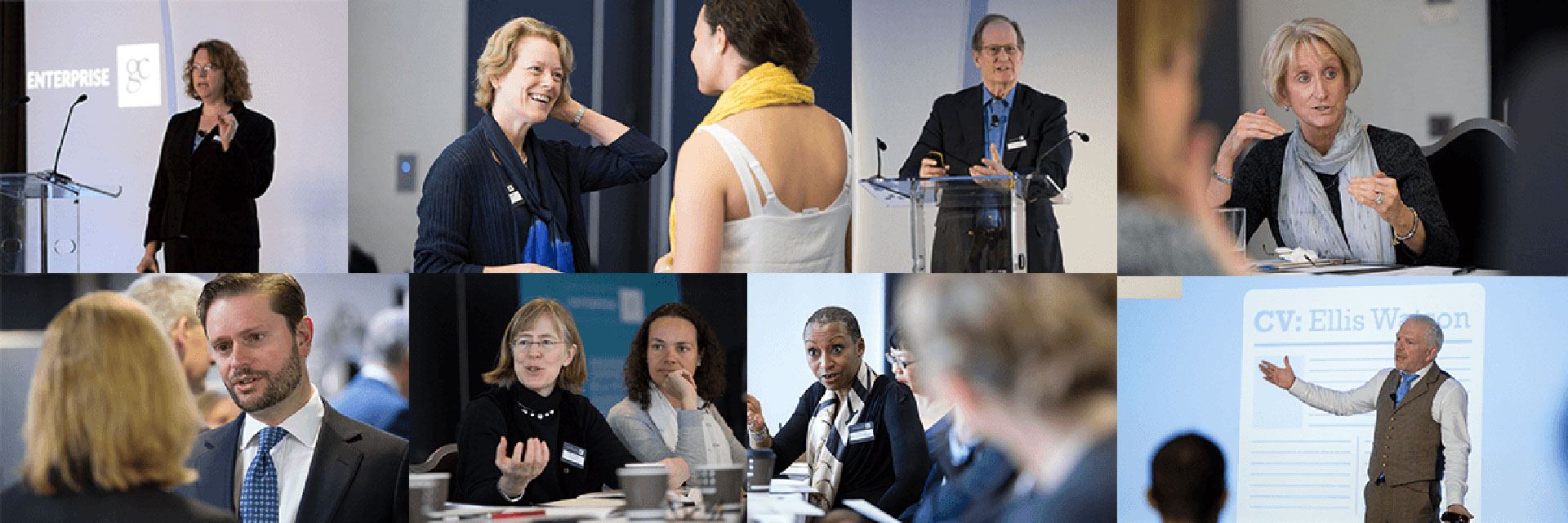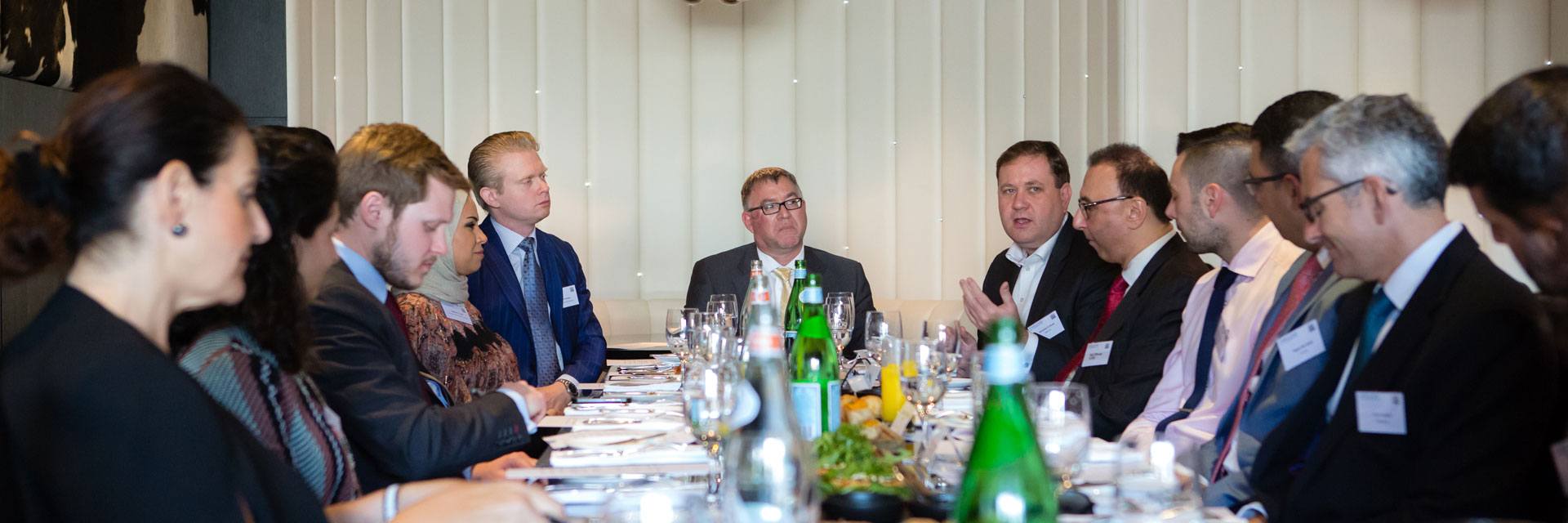Initiatives
In our quantitive survey of 250 in-house lawyers in the UK, agile or flexible working was perceived to be the most effective tactic in increasing diversity and inclusion.
Interestingly, this is beginning to be seen as a more effective way of working for businesses overall because it is more focused on outcomes. Indeed, many of our interviewees spoke of a more outcome-focused point of view as being transformational across the business, not just for diverse employees.
Much of this is changing the way we conceptualise work. Joan C Williams argued in her 2010 book Reshaping the Work-Family Debate that there is a mismatch between the workforce and the workplace that is fuelled by out-of-date societal norms and is one that can disadvantage men as much as women. Increasingly, flexible or agile working is seen as a solution across the organisation, and not merely a panacea to working mothers.
Barclays offers ‘dynamic working’ programmes across the bank. The name itself has also been key in reflecting a focus on an outcome-based model and trying to dispense with the notion of different forms of working as a somewhat lesser variant of the accepted norm.
Indeed, companies are looking to redefine the normal in regards to working anyhow. Sandie Okoro’s London-based legal team in HSBC Asset Management works flexibly as a matter of course and in setting up the legal team it was one of the core building blocks that reflected the way the wider asset management team is working. Okoro explained to us that making this an issue for everyone, not just certain groups, was key: ‘I structured my team in such a way that everyone can work two days a week from home. Most people take up that flexibility, and men are as keen on it as the women – it helps with work/life balance issues. Interestingly, when I recruited for my team, men were very keen on flexibility and this was something they hadn’t seen elsewhere.’
Looking at work differently becomes an issue of talent management more generally and one that gels with the different way of working increasingly associated with millennials or Generation Y. It is also a part of the general realities for companies that need to cope within a global and technologically open economy where the 9-5 rules no longer apply and disaster can strike at any moment through a number of different channels.
Technology has had a transformative effect in this regard on working practices across the board. But this has obvious benefits for those with caring responsibilities, particularly parents. Early years childcare is still overwhelmingly the responsibility of women and it has therefore had a dramatic effect on women’s ability to work at all, let alone to advance within their professions. Despite more women than men entering the profession in the UK since 1993, according to The Law Society, women are still not advancing into partnership and leadership levels at law firms in anything like the same proportion.
Traditionally in-house legal teams have benefitted at a certain stage in lawyers’ careers from the ability to be more flexible around working hours. For that reason, many in-house teams have noticeably higher demographics of female lawyers, including in senior roles, than most law firms do.
The focus on different ways of working, which many of our in-house teams and the companies where they work are using, has meant that the statistics in-house for some companies are dramatically different from law firms. For many of the in-house lawyers we spoke to, this is because of the focus on outcomes not hours, as Kerry Phillip, legal director at Vodafone told us:
‘I concentrate on the output, which means where you’re doing your work is not important; what is important is what you are delivering. Vodafone’s technology really helps here because we all have laptops and we all have mobiles. We hot desk…in the UK you can print documents at any of our locations.’
This has had obvious results on who works for Phillip as she has 50% split between men and women in her team, which includes part-time workers, job sharers and remote workers. The team has had three listings in the Power Part Time run by Timewise and as she comments, ‘That’s just fantastic recognition that you can have a senior, responsible job while not working traditional full-time hours.’
Initiatives
From our experience, diversity initiatives have the most impact when driven from the top and when they offer practical actions and tangible results.
In London, we have seen long term, sustainable change to BAME representation in our trainee and associate population. This was achieved through gaining strong management endorsement and making simple, practical changes to our hiring process. Our interventions ranged from introducing name-blind CVs and broadening the diversity of our interview panel through to introducing mandatory unconscious bias training. The BAME representation in our trainee ranks has moved from 3% in 2006 to between 20 and 35% for the last seven years.
Globally, the introduction of aspirational targets for gender diversity prompted a real shift change across the firm. Our targets not only aim to increase the gender representation within our partner population, but also to ensure that women are represented in firm and office leadership roles and committees. We have rolled out strategies both globally and at a local level to ensure we are developing and retaining female talent, and that our leaders are taking responsibility and ownership for achieving a better gender balance.
Our Global LGBT Initiative aims to ensure that every Baker & McKenzie office provides a safe space for LGBT colleagues to be themselves at work, regardless of the local climate. The initiative combines practical support ranging from bi-annual “affinity calls” and a global LGBT listening ear scheme with a robust policy stipulating a zero tolerance approach to bullying and harassment based on sexual orientation or gender identity. Perhaps most importantly, our approach has been led from the top, with our firm chair communicating our stance on LGBT equality to all staff across our global firm.
Mentoring and sponsorship
In our range of interviews, mentoring is happening via both formal and informal channels to promote diversity. In fact, mentoring may be one of the easiest ways for an individual to get involved informally. In a 2010 survey for Harvard Business Review it was reported that 59% of companies that replied offered formal mentoring programmes, suggesting it is an initiative that has gained a lot of traction. It is also very impactful. A 2011 report by the Center for Work- Life Policy (CWLP) in the US stated that people who are mentored achieve more promotions, higher salaries, more career satisfaction and even report being less stressed than those who lack such guidance.
However, a number of our interviewees who were experienced mentors advise that setting definite boundaries and expectations is key in having a successful mentoring experience.
Sandie Okoro, who mentors both formally and informally, feels that it’s important to let the mentee set the pace of the relationship but to also make sure it works for the mentor. Setting out limits, such as an initial time frame for the relationship, ensures the mentoring does not become too draining.
Interestingly, she also feels that as a mentor, highlighting failures and what can be learned from these is as important as highlighting the successes:
‘You have to be as open and honest about things that didn’t work for you as much as things that have worked. What makes a success sometimes is the ability to pick yourself up and keep going on.’
Common challenges of starting D&I initiatives?
One of the key challenges in starting any diversity initiative is identifying and clearly articulating the challenge and it’s implications. Without this, it is hard to establish a business case and to gain the support of leadership.
Some of our most successful diversity initiatives started with data – whether that was the representation of women in leadership roles in our firm, or the proportion of LGBT staff choosing not to be out at work.
While it might sound like a cliché, what gets measured gets done and in order to plan an effective diversity initiative, a key place to start is data.
Getting the match right between mentor and mentee can be one of the biggest pitfalls and something that needs care and consideration as with any significant relationship. Kristin McFetridge, who runs BT’s legal mentoring programme, told us: ‘The hardest part is matching someone with the right mentor. We’re revamping the questions we used originally, because they didn’t ask the right things and a lot of matching came down to gut feel. As a company-wide initiative we’re looking at a mentoring-matching programme, which will work like a dating app. If someone doesn’t connect with their mentor, despite all the will in the world, it will be fruitless.’
In our survey of in-house lawyers, mentoring and sponsorship were seen as less impactful than role models or championing of diversity initiatives from management. However, with sponsoring in particular, there was a high level of respondents who stated they had not seen this initiative in action. Conversely the amount of respondents who stated the importance of management buy-in and the need for targeting candidates was much higher.
Formal sponsorship seems to be less advanced in the UK than the US. However, research undertaken there by groups such as CWLP, Harvard Business School and Catalyst does suggest that sponsorship is much more effective than mentoring in producing long-term engagement and satisfaction via recognition and promotion which were often inspired by sponsorship or advocacy from more senior colleagues or managers. An interesting consideration though is whether in some cases, the championing of diversity and inclusion by senior managers and mentoring initiatives may be informally blending in the UK into something more akin to advocacy.
Networks and ally groups
Networks are used by a number of companies we interviewed to provide a tangible platform within which those groups can raise issues that are important to them and via which the company can demonstrate how serious it is about the initiatives pertaining to that group. The existence of official networks and also the related ally groups are a tangible awareness- raising tool within corporates to show that these are demographics that matters and need to have a voice.
That inclusive aspect is key to the power of networks but it is a two-way street allowing voices at the grassroots to be heard, but also showing that those who need to are listening. As Alison Gaskins at Barclays explains in regards to their very active network programmes: ‘It is not about the job title because everyone needs to feel responsible. That’s where employee networks step in, because people are deciding for themselves what works. It becomes an inclusive approach.’
The pipeline
One of the issues that many companies struggle with is ensuring the pipeline of credible diverse candidates. For many in-house teams the pipeline is still mostly private practice law firms and the issue can be trying to fix someone else’s problem. While arguably many law firms are making sterling efforts in promoting diversity and inclusion, the viewpoint from the in-house lawyers we spoke to was that it was at best a mixed bag and at worst, merely lip-service without credibility.
This means that for in-house legal teams there are two major solutions, neither of which are short on effort. Firstly, teams can try and bring on their own in-house legal trainees. This is often seen as a good way for diverse and non-traditional candidates to enter the profession. Our in-depth interviews with BT, ITV and The Guardian, all of which have legal teams of varying sizes, showed they have done this successfully. However, it still relies on the goodwill and co-operation of law firms to provide some of the training seats.
The pipeline
As a law firm, our people are our greatest asset. Ensuring we continue to evolve in a changing world means converting the diversity in our talent pipeline is critical.
We carefully review people data on a regular basis by diversity strand, to identify any particular themes or trends based on recruitment, progression and attrition. As a call to action to improve female representation at senior levels, we were one of the first firms to introduce global targets for gender diversity. We regularly review progress against these targets on a firm-wide, local and departmental basis.
Can diversity only be achieved by the generations coming through? No. Law firms have been taking great strides for a number of years now to ensure greater diversity at entry level. We have a responsibility as a profession to support, develop and ultimately promote that diverse talent.
The other route is via lobbying law firms to be more proactive around their pipelines and working with them on initiatives that do that, and a number of the companies we spoke to for this report are involved in this. ITV and BT both work on the PRIME social mobility initiative alongside a number of large law firms with the aim of encouraging more social mobility in the profession.
Social mobility remains a significant issue in the UK legal profession. According to our research this is due to a range of factors, such as an inadequate pipeline of viable candidates and the issue of self-deselection from the career path before application for training contract or even before university.
There has been a habit of focusing on particular universities and grades in the selection of candidates, and traditionally most candidates who did not attend The Russell Group or Oxbridge were deselected for any law firms’ criteria automatically. Another factor has been the lack of visibility of social mobility role models. In some cases, people have had to make a tangible choice to identify as socially mobile as it may not be outwardly visible or identifiable. This issue has historically been further compounded by the fact that by the time socially mobile candidates ‘make it’ they may feel the pressure, either actual or perceived, to fit in and hide their roots.
One of the recent significant advances in this area is the adoption of contextual recruitment by many law firms to avoid the arbitrary list of diverse talent via a fixed set of criteria of grades and university choice. Instead, contextual recruitment looks more holistically at the candidate’s achievements via the context of both personal and educational factors.
A huge issue in regards to pipelines is making sure that candidates don’t self-select themselves out. As Barry Matthews of ITV comments, in the cohort of young people in the Legal Social Mobility Partnership (LSMP), a significant amount of focus has been developed to consider issues of confidence and resilience, often via the use of sports and performance psychology training.
As Matthews told us, if a socially mobile candidate is unsure of their career choice anyhow, and then receives a rejection from a training contract application, they may consider it just proof they should not pursue a career in law. A more socially affluent candidate who knows people in the legal sector will probably know that this is part of the process and just move into the next application. This is where, as pointed out by Sandie Okoro in regards to mentoring, teaching about failure is as important as teaching about success.










